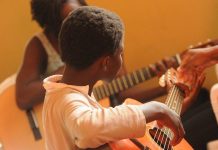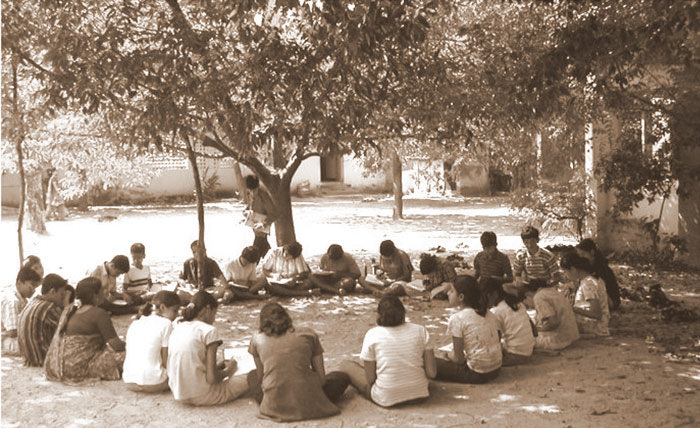
The current times call for a need to envision education with the demands of the present situation and for that very reason we must make changes to adapt well. The society we live in is constantly evolving and for the ever-changing world we also require education that garners tools that helps students to be not only academically excellent but also compassionate, responsible towards others and themselves. For this, we need to add something in the education system, that is, social-emotional learning. As of now, education is missing SEL which is a highly sensitive part of the system. Research in SEL shows that focusing on social and emotional aspects of children also helps in developing other academic skills from the early years of their life. Also, we need to take into account that both academic as well as emotional intelligence plays a huge role when we talk about education for the whole child.
Even The New Education Policy recognises the importance of Social-Emotional Learning for holistic development of children from early childhood. “Based on the developments that have taken place in the world of cognitive science, there is now deep engagement with the idea that these social and emotional competencies must be acquired by all learners and that all learners should become more academically, socially and emotionally competent”. (National Education Policy, 2019)
Social-Emotional Learning is a new way of looking at education, where students develop skills to be intellectually intelligent as well as grow to be kinder, compassionate, and responsible citizens of the society.
Here, we will try to understand what SEL is, why it is needed in schools, and some applications.
What is SEL?
As we break down each term separately, we could say that it is “an approach of learning that deals with society (Social/Outward) and with oneself (Emotional/Inward).” Maurice J Ellias stated, “Social-emotional skills, or ‘emotional intelligence’, is the name given to the set of abilities that allows students to work with others, learn effectively, and serve essential roles in their families, communities and places of work.” (The International Academy of Education, 2003). SEL is a process where children learn self-awareness, management, empathy, responsible decision making, etc.
SEL instructions are provided in schools to students by incorporating it through curriculum, activities, games, play, etc. This cultivates a sense of belongingness, caring, compassion towards each other and also with themselves. Social Emotional Learning provides an enriching environment and empowers students to be kinder, compassionate, and resilient not only for today but also for the unpredictable future. These skills equip children of today with better and positive interventions for tomorrow.
We can also say that SEL is more than a course or a subject. It is not something which is taught once and our work is finished. SEL is a life goal, it is continuous and ever changing.
School, Content, and Pedagogy
What we have seen till now is that curriculum, the content which is taught in schools primarily focus on academic excellence and social and emotional learning takes a back seat. Then, we say “Education is for a whole child”. When we talk about the whole child, why do we only focus academically? As we know that the traditional teaching model in schools is not of today but was designed many years ago as per the needs of that time. The present situation requires a change in the system. Which could be met when children not only excel academically but also socially and emotionally.
“What we need education to focus on is the development of a more sustainable and peaceful way of living – with content, pedagogy, and assessments that facilitate human flourishing, constituting the overall well-being of the planet and humanity.” (UNESCO MGIEP, The Blue Dot)
How content is delivered in classrooms highly depends upon the teachers. Thus, pedagogy is one of the key factors that help children in navigating their emotions, dealing with it, and accepting changes. For teachers to be able to deliver content through the SEL approach one needs to firstly, focus on themselves. So, they are equipped with social and emotional skills, are empathetic and compassionate in order to cater and nurture children in emotional intelligence.
A shift is required in school, content, and pedagogy in order for the missing piece i.e., social and emotional learning together with intellectual intelligence, where both work in making the education for the whole child.
What can we do?
Restructuring classrooms and creating learning opportunities for students that provide them with skills to assess situations and perspectives from different point of views, being problem solvers and thinkers. This requires a change in classroom organization, specifically how we teach what we want to teach and what children should be taught as per the need of the hour.
Some Practical Applications:
- In most of the traditional school systems, working in collaboration is not given much significance but when young children work together, get feedback from peers it helps them in assessing their work from different point of views, seeing what gaps are there and enabling them to work upon it.
- Playing games can also be one of the activities which stimulate children with emotional as well as academic intelligence. UNESCO MGIEP suggests commercial -off-the-shelf (COTS) games for education. “This refers to not using a “learning game” but a commercial game, developed for entertainment purposes as an educational tool inside or outside of classrooms.” It gives examples such as Minecraft for teaching Mathematics, World of Warcraft for teaching civics, general science, and language, etc.
- Conducting activities in classrooms that require children to have communication over events or issues that have deeply affected them in some way could let students accept others’ opinions and beliefs and this in turn might help students in enhancing their views about different people and the society as a whole.
“Schools should help to grow students — people who know how to direct their own learning and determine their own lives.” (UNESCO MGIEP, The Blue Dot)
We know that the school structure is one where every year we have toppers. This makes the other half of the student losers and the former winners but one must realize this evaluation is purely on academic terms. Rather a school should work as a facilitator, a provider for an enriching social and emotional learning environment where children thrive and excel together on various spectrums. Investing in SEL in the early stages of a child’s life can work as a tool that makes one sufficient and on a broader scale helps to grow a society that is compassionate and kind.
Akshita Bisht is a post-graduate in Education from Ambedkar University Delhi. Her research interests include children’s literature, gender and education, and social-emotional learning.













